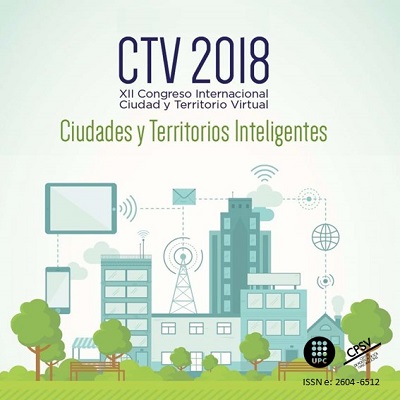Mending Termini Station
DOI:
https://doi.org/10.5821/ctv.8243Palabras clave:
remendar, regeneración urbana, movilidadResumen
Mending Termini Station es el título de una experimentación académica que ha sido tratada y profundizada entre 2017 y 2018 en el contexto de un Master en finanzas inmobiliarias (en la LUISS Business School en Roma), un Taller internacional de planificación urbana y arquitectura (con la participación de las universidades de Roma Tre y Sapienza, de Roma, ETSAB/UPC, de Barcelona, UFRGS, de Porto Alegre – Brasil, y UNR, de Rosario - Argentina) y varios cursos de Urbanismo en el Departamento de Arquitectura de la Universidad Roma Tre.
La experimentación se funda sobre la anomalía genética de las ciudades italianas, ligadas al transporte por carretera (auto particulares, buses y camiones), que muestra progresivamente y dramáticamente sus consecuencias, especialmente en la ciudad de Roma - que tiene el territorio municipal más amplio de Europa. El "cuidado del hierro," prometido por el Plan Regulador municipal de 2008, que contemplaba nuevas líneas de metro, tranvías, ferroviarias, corredores preferenciales de transporte público y el cierre del cinturón ferroviario en la parte norte de Roma, lamentablemente sigue apareciendo en las crónicas debido a quiebras y interrupciones.
La congestión del tráfico vehicular, debido a la estructura radial de la red vial romana (que sigue la estructura de las antiguas carreteras consulares), la ineficiencia del transporte público y el flujo monodireccional de viajeros diarios a y del centro de la ciudad, involucra a toda el área metropolitana y paraliza todos los días a los ciudadanos.
En particular, la estructura de los ferrocarriles parece penalizada por el cinturón que todavia nunca se ha completado, por una nueva estación para los trenes de Alta Velocidad, la Estación Tiburtina, subutilizada debido a la presencia dominante de la Estación Termini, la estación principal de Roma, donde llegan la mayoría de los trenes regionales y Alta Velocidad.
Por su ubicación, a caballo entre las Murallas Antigua del Emperador Aureliano, que rodean el centro histórico de Roma, la Estación Termini se carateriza como un corte en el medio del corazon de la ciudad, un fragmento urbano que separa los barrios Esquilino, Castro Pretorio, San Lorenzo, y que atrae fenómenos al mismo tiempo de degradación y turistificación masiva.
El proyecto Mending Termini Station está inspirado en una hipótesis del Plan Regulador de 1931 (por el arquitecto Marcello Piacentini). Este Plan, al final de un largo debate que duró más de cincuenta años, propuso la eliminación de la estación de Termini, construida en el cuadrante oriental del centro histórico de Roma, reemplazándola con un ferrocarril subterráneo y una nueva estación ferroviaria, también esta subterránea, y el cierre simultáneo del anillo ferroviario hacia el norte. La zona de Termini, una vez liberada de la infraestructura ferroviaria, estaba destinada a convertirse en un nuevo centro direccional con características monumentales, en línea con lo que se logró en otras capitales europeas.
Mending Termini Station actualiza las ideas de planificación de 1931: la eliminación de la actual estación de Termini, reemplazada por un nuevo trazado ferroviario subterráneo y una nueva estación, también subterranea, únicamente para el Alta Velocidad; la reutilización y valorización de la Estación del 1949 y de su gran área central, liberada de los rieles; el cierre del cinturón ferroviario con la reorganización de la movilidad y del transporte público de toda el área metropolitana de Roma. Todo esto, en total conformidad con las regulaciones europeas sobre la liberalización del mercado ferroviario.
El ensayo ilustrará los estudios preparatorios, los análisis históricos, el modelo actual, las evaluaciones críticas y los métodos de construcción de las propuestas. La metodología de implementación ha previsto un juego de rol, donde estuvieron representados los tres actores principales de la transformación urbana: el Municipio, la empresa que gestiona la red ferroviaria y los edificios ferroviarios, RFI Rete Ferroviaria Italiana (Grupo Ferrovie dello Stato) y finalmente los ciudadanos mismos.
Las soluciones propuestas se caracterizan por su factibilidad urbana, de transporte y movilidad y también socioeconómica. Por lo tanto, constituyen una propuesta sostenible para la ciudad de Roma y su sistema de transporte público.
























